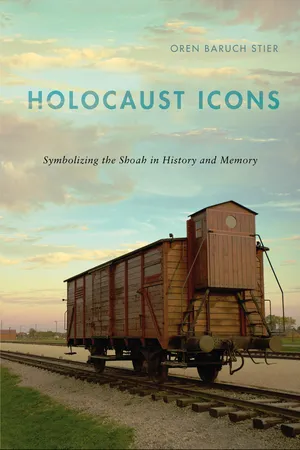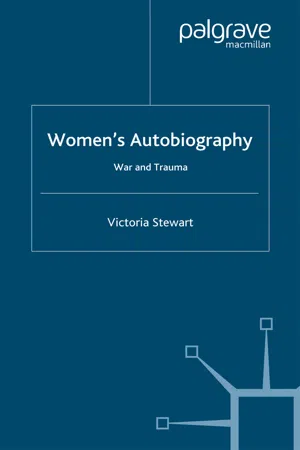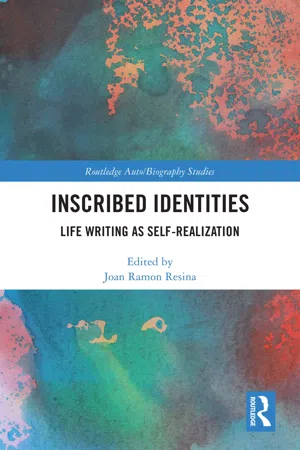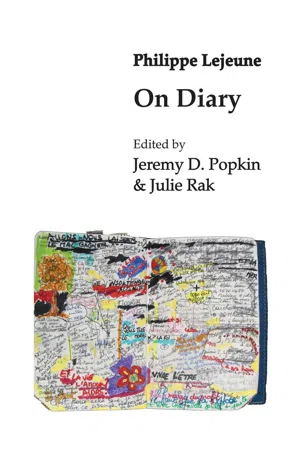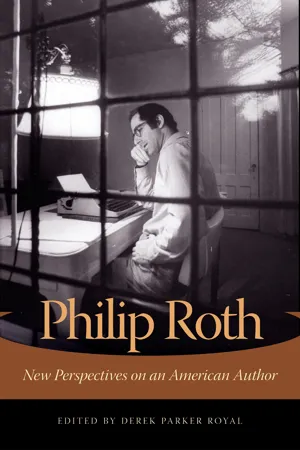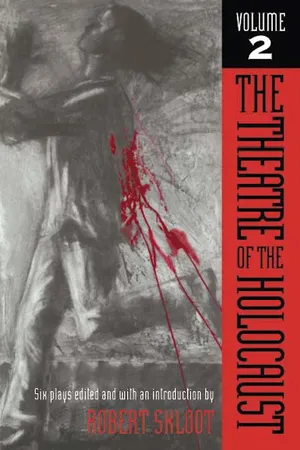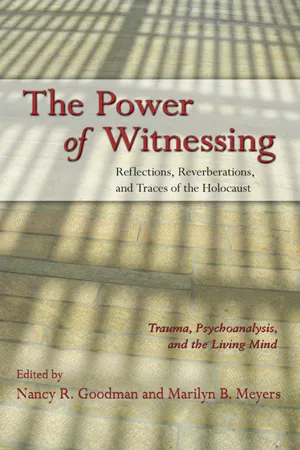Literature
Anne Frank
Anne Frank was a Jewish girl who kept a diary while hiding from the Nazis during World War II. Her diary, published as "The Diary of a Young Girl," provides a firsthand account of the Holocaust and has become a symbol of resilience and hope. Anne's writing has had a profound impact on readers worldwide, offering a personal perspective on the horrors of war and persecution.
Written by Perlego with AI-assistance
Related key terms
1 of 5
8 Key excerpts on "Anne Frank"
- eBook - ePub
- Oren Baruch Stier(Author)
- 2015(Publication Date)
- Rutgers University Press(Publisher)
70The mistaken impression regarding Frank’s survival itself becomes the subject of post-Holocaust literary imagination. Prose contrasts the diary’s inherent reticence concerning Frank’s fate with the atrocity images not shown as part of the diary: “The semblance of ordinary domesticity that the Franks preserved enables Anne’s audience to read her story without feeling the desire to turn away, the impulse we may experience when we see the photos and footage of the skeletal dead and dying.”71 In this way, because of the absence of visual indices of the horror of the Shoah and the near absence of its narrative markers, the diary succeeds in holding readers’ attention. Rosenfeld adds, in an incisive point about the idealization of Frank’s short life and the popular image of Frank: “Following prescribed norms . . . the image of Anne Frank that has evolved over the years has been largely sanitized of any realistic sense of her life and death. . . . [H]er death is either glossed over or given a hopeful, even beatific character.”72 Thus, the end of Frank’s own chronicle and the ways the end of her life are or are not narrated are additional keys to the diary’s (and its author’s) iconic nature: these narrations either refrain from telling or showing atrocity, offering some illusory semblance of normal teenage life, or they transform the end (beyond the bounds of the diary) into a transcendent event.73 - eBook - PDF
Women's Autobiography
War and Trauma
- V. Stewart(Author)
- 2003(Publication Date)
- Palgrave Macmillan(Publisher)
However, the Anne Frank Educational Foundation has as one of its aims the promotion of anti-racism and tolerance, not specifically anti-Semitism, and the contextual material Anne Frank: The War from the Annexe 87 88 Women’s Autobiography displayed at the Anne Frank House in Amsterdam has a similarly wide focus. Tim Cole notes that the ‘ “liberal” message of the “Universal Anne” ’ (p. 41) was the burden of an exhibition, ‘Anne Frank in the World 1919–1945’ which toured during the late 1980s and early 1990s, and argues that such a liberal understanding of Anne Frank’s story, and by extension the Holocaust can be overly reductive. ‘[I]f we ask ourselves “had Anne Frank – an ordinary young Jewish girl – lived next door, could she have counted on us for help during the Nazi occupation?” and simply answer “yes”, we betray a lack of humility which confrontation with the Holocaust demands’ (Cole, p. 43). Kushner suggests further that for a post-war generation who ‘were ambivalent to the precious and untouchable memory of the war presented by their parents, The Diary offered a new perspective and one which they could identify with through the adolescent struggles of a young girl – in spite of her being imprisoned in an Amsterdam attic’ (p. 14). 4 For Kushner, as for Cole, such generalized identification – the notion that anyone who has been, or is, an adolescent can find something to relate to in the diary – is simply another means of stripping away the historical and cultural particularities of the text. Reinstating the context is one possible way of remedying this situation, as both Cole and Kushner point out. Through a reading of the text which is attentive both to its status as a work of autobiogra- phy and to the exigencies of its production, the Holocaust can be brought to bear on the diary in such a way as to defamiliarize what has become, effectively, an empty signifier. - eBook - ePub
Inscribed Identities
Life Writing as Self-Realization
- Joan Ramon Resina(Author)
- 2019(Publication Date)
- Routledge(Publisher)
The choice of Frank as analogue is, of course, highly contentious, given the vast geopolitical and temporal range of the Anne Frank phenomenon, and therefore the many and significant differences between these texts, their writers, and the experiences they document, differences that are erased when the subjects adopt or are labeled “Anne Franks.” Moreover, this use of Frank—or the Frank “brand,” as Ozick calls it—is additionally problematic because the paradigmatic, iconic “Anne Frank” this label affirms is itself a misreading of both Frank and her diary, as Alvin Rosenfeld, Hano Loewy, Francine Prose, and Kirshenblatt-Gimblett and Shandler, among others, have documented. The Anne Frank to whom contemporary readers refer is largely a fiction, one that draws particularly on the version of her that the Goodrich and Hackett play and film popularized and that have become the basis for much if not most public knowledge about Frank (Rosenfeld 261; Langer “Americanization”; Loewy). In these revisions of Frank, she is cast as an Americanized (and de-Judaized) schoolgirl focused on romance and idealism, characterized by the out-of-context line that ends both play and film: “In spite of everything I still believe that people are really good at heart” (Langer “Americanization”; “Misuses” 204; Loewy 158; Rosenfeld 251–5). This is the “Anne Frank” who is a known entity in the West, a brand that, as Hano Loewy and Alvin Rosenfeld have each argued (Loewy 158; Rosenfeld 251–5), conjures images of a forgiving victim (not heroic martyr). Because Frank’s diary ends in the Annex, and thus spares readers any confrontation with concentration camps or her death (Rosenfeld 208), it further sets up an expectation of narratives that will be more hopeful than grim, full of youthful optimism and soul-searching as well as—or in spite of—the war to which it bears witness. Thus, even Anne Frank is, to some extent, “Anne Franked,” subject to an identity posthumously constructed by her survivors and fans, translated into a universal symbol serving a range of needs for a range of consumers. I turn now to Dang Thuy Tram, Farah Baker, and Bana al-Abed, the Anne Franks of Vietnam, Palestine, and Aleppo, respectively, to examine how—and for whom—Anne Franking works in these different cases. Tram is posthumously reconstructed through the original diarist, while al-Abed and Baker are living Anne Franks who continue to produce testimony and interact with their audiences through social media. These distinctions highlight the complexities of ethics and agency as well as identity that mark this practice. - eBook - PDF
- Philippe Lejeune, Kathy Durnin(Authors)
- 2009(Publication Date)
- University of Hawaii Press(Publisher)
The Diary of Anne Frank has achieved a mythical status on three levels. She is one of many witnesses and victims of the Holocaust. She has become an exemplary figure of the Adolescent. But she is exemplary on another level: she has shown us that everyone can write, and that writing can save people, if not from death, then at least from be-ing forgotten. Anne is a very young adolescent, an amateur writer, or rather a budding writer, who was transformed by circumstances—although she did not live to realize it herself, even though it is what she wanted—into a great writer whose work has enriched the lives of millions of readers. Read as a sim-ple testimony but in fact experienced as a masterpiece, her published diary “Comment Anne Frank a réécrit le journal d’Anne Frank.” Les Brouillons de soi. Paris: Seuil, 1998. 331–65. Revised 1 Nov. 2005. 238 On Diary gives people hope and courage: it legitimizes all so-called ordinary writings. Studying the genesis of the text may fill us with admiration, but it is also li-able to make us feel uneasy. When we read a diary, we need to believe that what we are reading is literally what was written on that day. Otto Frank and the original editors were aware of that, since in 1947, the reader was informed at the beginning of Het Achterhuis: Dagboekbrieven van 12 Juni 1942–1 Augustus 1944 ( The Annex: A Diary in Letters, 12 June 1942–1 August 1944 ) that “except for a few passages of little interest to the audience, the original text is published in full.” This presentation implied that there was one full original text: we will see that there were two texts, both incomplete. It also implied that the cuts were minimal and did not alter the meaning of the text in any way. Up until 1986, then, the Diary was read as an unedited document whose authenticity was guaranteed. Authentic it most certainly is, but in a much more convoluted way than one might think. I will present my research into that convolution in two parts. - eBook - ePub
New Directions in Jewish American and Holocaust Literatures
Reading and Teaching
- Victoria Aarons, Holli Levitsky, Victoria Aarons, Holli Levitsky(Authors)
- 2019(Publication Date)
- SUNY Press(Publisher)
I am interested in a further consideration of what it means to think about Anne Frank as a “poster child”—an exemplary case in order to fit a stereotype—or as a “trope,” to use Jacobs’s term, or as a figure, to use my own. In these cases, “trope” and “figure” (and even, to some extent, “poster child”) are examples of literary writing that require readers to see beyond the literal denotation of the word. In twenty-first-century literary studies, particularly studies of representations of the Holocaust, there seem to be enormous stakes in looking past Anne Frank’s lived history and seeing in that history potential for literary figuration. I am interested in asking students not only what Anne Frank as a metaphor might mean in the larger sense, but also what is to be gained and lost in terms of understanding the Holocaust—and even representation—when we turn a living, breathing girl into a metaphor for something else. Ultimately, I wonder: Is it ethical to use Anne Frank as a literary figure in fiction about the Holocaust? The short answer, I would contend, is both yes and no. But the longer answer involves a consideration of ethics, not only after the Holocaust, but now, more than seventy years later, in our post-9/11 landscape. In linking the figuration of Anne Frank with what I am calling “the ethical imperative”—a phrase borrowed from disciplines as far ranging as the law, medicine, philosophy, and business—I argue that authors such as Roth and Englander have used Frank as a figure to emphasize the ways in which we are responsible for the well-being of one another, a relationship between self and other that is not entirely different from the relationship between writer and reader, calling attention to the critical role of storytelling itself.A 2012 collection edited by Barbara Kirshenblatt-Gimblett and Jeffery Sandler titled Anne Frank Unbound: Media, Imagination, Memory has accomplished much in terms of this larger consideration of Anne Frank’s role in popular memory, especially during a cultural moment when Anne Frank studies seems to be experiencing a resurgence. According to the editors:The Anne Frank phenomenon shows no sign of abating. Tributes to Anne Frank now reach to the heavens (an asteroid was named for her in 1995), she has become a fixture of new social media (a Facebook page was created for her in 2008), and her diary garners ever more prestigious accolades (it was added to the UNESCO Memory of the World Register, along with the Magna Carta and the Nibelungenlied, in 2009). As this book went to press, two writers, Shalom Auslander and Nathan Englander, published works of fiction in which Anne Frank figures prominently, as an immortal presence haunting a contemporary American Jewish family’s home and an epitomizing test case of personal loyalty, respectively.3 - eBook - PDF
Philip Roth
New Perspectives on an American Author
- Derek Parker Royal(Author)
- 2005(Publication Date)
- Praeger(Publisher)
As Zuckerman How TO TELL A TRUE GHOST STORY 99 points out, it is she, and not her sister Margot, who wrote: "the time will come when we are people again, and not just the Jews" (142). In fact, this question of Anne Frank's ethnic identity emerges often in her diary. On December 24, 1943, Anne reflects: "I sometimes wonder if anyone will ever understand what I mean, if anyone will ever overlook my ingratitude and not worry about whether or not I'm Jewish and merely see me as a teenager badly in need of some good plain fun" (154). The popular- ization of Anne Frank, due in part because of Anne's self-consciously crafted writing persona as merely a teenager and not a victim of the Holocaust— along with the concomitant dangers of both romanticizing and distorting the world she describes in her diary—are issues that have been passionately taken up by current Holocaust scholars. Alvin H. Rosenfeld, for example, recog- nizes that readers of Anne Frank's diary see her "as a young, innocent, viva- cious girl, full of life and blessed with an optimistic spirit that enabled her never to lose hope in humanity, even as its worst representatives were intent on hunting her down and murdering her" (248). Anne Frank's optimism, Rosenfeld emphasizes, dulls the painful awareness of history at its worst, and effaces the fact of Anne's death in a concentration camp. Cynthia Ozick's analysis of the appropriation of Anne Frank for Holly- wood and Broadway, and the general consumption of her forgiveness of humankind, is much less forgiving than Rosenfeld's. According to Ozick, "any projection of Anne Frank as a contemporary figure is an unholy specu- lation; it tampers with history, with reality, with deadly truth" (76). - eBook - PDF
- Robert Skloot(Author)
- 1999(Publication Date)
- University of Wisconsin Press(Publisher)
Dreams of Anne Frank (the title refers to our "dreams" of Anne 20. Dreams of Anne Frank (London: Methuen Student Edition, 1997), pp. 2-3. INTRODUCTION 25 as well as to her dreams for herself and the special dreaming she does in the play), retains a powerful sense of tragedy without los- ing a firm grip on historical understanding despite its dramatic form. When the voices of the Germans are heard ordering the at- tic's evacuation, the focus of the play shifts away from Anne's cre- ative imagination to its destruction. The actors form a "sort of boxcar" and, accompanied by the sounds of trains, they undress into "prison camp clothing" and sing the prayer testifying to the inextinguishable faith of the Jews in their God, Am Ma-amin. The stage direction reads: Anne kisses her diary and reluctantly discards it, putting it down on the pile of clothes heaped on the stage, and she exits through the back door, following the others. Her diary seems to light up the darkness that now envelops everything. Otto Frank returns to have the final word. He sums up the histori- cal record for the audience and the permanent personal loss of a daughter for whom the diary she kept is an inadequate substitute. This last image attempts to create for the young audience a sense of profound sadness and implacable parental love. The Model Apartment They're all inside me. All of them. Anne Frank. The Six Million. Bubbie and Zayde and Hitler and Deborah. When my stomach talks, it's them talking .... I eat for them so they won't be hungry. —Debby Much has been written about the Holocaust and how its theat- rical representation presents difficulty for artists whose work be- comes "popular." The word itself has several meanings: an active and "loose" presence in the general culture, as well as an artifact without uniqueness, deformed by a leveling universality. Alvin H. Rosenfeld's discussion of the public disagreements that occur when art engages a historical subject was noted earlier. - eBook - ePub
The Power of Witnessing
Reflections, Reverberations, and Traces of the Holocaust: Trauma, Psychoanalysis, and the Living Mind
- Nancy R. Goodman, Marilyn B. Meyers, Nancy R. Goodman, Marilyn B. Meyers(Authors)
- 2012(Publication Date)
- Routledge(Publisher)
The first witnesses of the Holocaust were the victims who were writing to others and recording what was happening in the immediacy of the events. They were appealing for help and leaving evidence for the future in the face of most certain death. Terence des Pres (1976) wrote of survivors:The “world” to which the survivor speaks is very much a part of their condition as witnesses. They speak for someone, but also to someone and the response they evoke is integral to the act they perform. And here an unexpected ambiguity arises. As a witness the survivor is both sought and shunned; the desire to hear his truth is countered by the need to ignore him. (p. 41)This tension between the desire to know and the horror at knowing is inevitable. However, that knowing and not knowing coexist simultaneously along the continuum of the desire and need to know and the turning away from the horror. This exists in the minds of both the survivors and the witnesses. The tension and dynamic balance between the two poles shift over time.Amid the horrors, there were people who were determined to speak the truth. They were able to hold in their minds the existence of a willing witness who would believe them and be receptive to knowing the atrocities. Referring to diaries that were written in the early stages of the war, Saul Friedlander (1997) wrote: “Beyond their general historical importance … personal chronicles are like lightening flashes that illuminate part of a landscape” (p. xv). One survivor (Leon Thorne) stated, “I dare not hope that I will live through this period, but I must work as though my words will come through” (des Pres, 1976, p. 40). Telling the truth at that time was both necessary and traumatic; it remains so to today.Two young people, Anne Frank and David Graber, felt the urgent need to record their experiences with the expectation and hope that others would know. There are, however important differences—Graber knew that he was destined to die, whereas Anne Frank lacked this awareness and remained hopeful to the end.Anne Frank: An Icon of Witnessing
The Diary of a Young Girl (Frank & Pressler,
Index pages curate the most relevant extracts from our library of academic textbooks. They’ve been created using an in-house natural language model (NLM), each adding context and meaning to key research topics.
